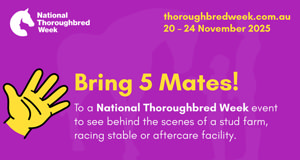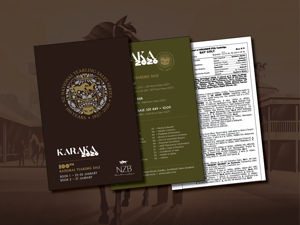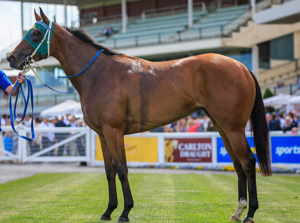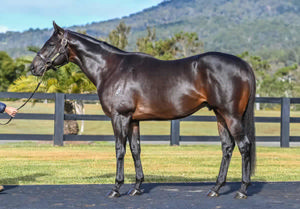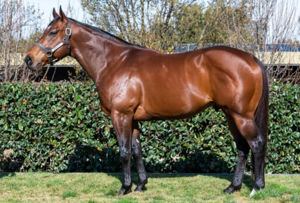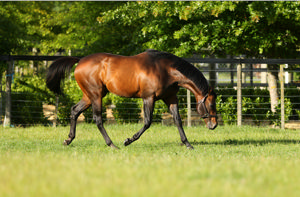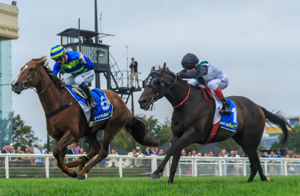Any serious business regularly monitors the progress of its business.
This principle is reflected in how seriously the ATO views the keeping of proper records when determining if horse activities are a ‘business’ for tax purposes.
If you want your business to look ‘hobby like’, keeping poor and untimely records is a sure-fire way to make the ATO question your business status – no matter how much you’ve spent and the quality of your stock.
In my experience of ‘troubleshooting’ for outside clients having difficulty arguing a business status with the ATO, it regularly amazes me as to how often stock records are poorly maintained, especially as they are the major income producing assets of the business.
In recognition of their importance, this article will go into detail about the best way of maintaining ‘ATO friendly’ trading stock records and, furthermore, emphasise the importance of keeping ‘job cost’ records for each horse.
Why keep stock records?
The Tax Act has a whole division that outlines the ‘trading stock’ rules, these being referred to given that ‘livestock’ held for future trading is also defined as ‘trading stock’.
The trading stock rules deal with amounts that a taxpayer can deduct and amounts that are included in a taxpayer's income, when the taxpayer:
- acquires an item of trading stock;
- carries on a business and holds trading stock at the start or the end of the income year; or
- disposes of an item of trading stock outside the ordinary course of business (or an item ceases to be trading stock in certain other circumstances).
The purpose of income tax accounting for trading stock is to produce an overall result that properly reflects the taxpayer's activities with their trading stock during the year. The most important part of this process is to determine the value of closing stock using the prescribed methods. For horses, these methods are:
a) cost;
b) market selling value;
c) replacement value; and
d) special closing value, i.e. the mare and stallion ‘write-off’ rules.
Note – the ATO do not allow horses to be valued as ‘average cost’, this method only allowed for livestock that cannot normally be individually identified, e.g. sheep or cattle.
The difference between the value of trading stock on hand at the start and at the end of the income year is brought to account as either assessable income or as an allowable deduction.
Example
If opening stock value for horses on 1/7/2019 is $100,000, and at year end, i.e. 30/06/2020, closing stock is valued at $150,000, this difference is a positive $50,000 and thus this $50,000 is income of the business.
If opening stock for horses on 1/7/2019 is $100,000, and at year end, i.e. 30/06/2020, closing stock is valued at $70,000, this difference is a negative $30,000 and thus this $30,000 is a deduction of the business
Bloodstock Taxation Schedule (BTS)
Determining the closing stock value of your horses is crucial and thus our office prepares a ‘Bloodstock Taxation Schedule’ (BTS) for all horse industry clients. In every Audit I’ve ever been involved with, the ATO has requested ‘stock records’ that support the closing stock value, so the value of having a BTS cannot be underestimated. You just cannot merely ‘guess’ the value of your closing stock!
The BTS we prepare for clients, contains the following information:
- Horse name or pedigree (if unnamed);
- Closing stock method used (i.e. ‘cost’, ‘market value’, ‘replacement value’ or ‘write-off’ rules);
- Year of foaling;
- Sex of the horse;
- Date acquired;
- *Cost of the horse;
- Sale or disposal value of the horse;
- Horse write-off percentage (if using the ‘write-off’ rules);
- Write-off amount (if applicable); and
- The closing value of the horse.
*Cost of the horse is not what is necessarily paid, for example;
- If the horse is acquired by ‘gift’ or NIL consideration, the ‘cost’ is its market value at date of acquisition. Note – too often I see this overlooked and a horse business missing out on valuable tax deductions when acquiring stock; and
- Commission paid to an agent or freight incurred to get the horse on hand for the first time, e.g. freight incurred to get a broodmare acquired from overseas, form part of the ‘cost’ of the horse for trading stock purposes.
Within the BTS, horse type/use should be specifically designated, for example the BTS for our clients will list horses under each of these headings:
- BROODMARES
- WEANLINGS & YEARLINGS
- RACEHORSES (TRADING STOCK)
- STALLIONS
- FARM/WORKING HORSES
Based on the above, see below for what a typical Carrazzo stock schedule will look like for a broodmare:
|
Sale or disposal |
Write-off amount |
Closing Value |
|||||||
|
Name or |
Tax stock |
Year of |
Date |
Cost |
Write-off |
||||
|
pedigree |
method |
foaling |
Sex |
acquired |
$ |
$ |
% |
$ |
$ |
|
BROODMARES |
|||||||||
|
ABC |
W/Off |
2012 |
F |
1/07/2019 |
100,000 |
- |
20 |
20,000 |
80,000 |
‘Job costing’ of horses
To really convince the ATO you are serious about monitoring the progress of your horse business, and thus look ‘business-like’, we also strongly suggest you ‘job cost’ each horse. By ‘job cost’ I mean that every expense and income item should be allocated to the specific horse it relates to. Sophisticated and popular Accounting software such as ‘MYOB’, ‘Quickbooks’, ‘Xero’ and ‘Ardex’ allow you to do this via the set-up of a ‘job’ for every horse you own.
For every income and expense item you process in your software, there will be an additional cell that asks the bookkeeper as to what horse (i.e. job number) that item relates to.
If ‘job-costing’ is set-up properly, with the press of a button you should be able to generate a ‘job P&L’ that will list each horse and what income and expenses (including purchase price) relates to that horse. This will quickly tell you who are the ‘lifters’ and ‘leaners’ amongst your horse stock and provide a valuable basis to determine those that should be ‘culled’.
Please don’t hesitate to contact the writer if you wish for me to clarify or expand on any of the matters raised in this article.
By Paul Carrazzo - www.carrazzo.com.au


